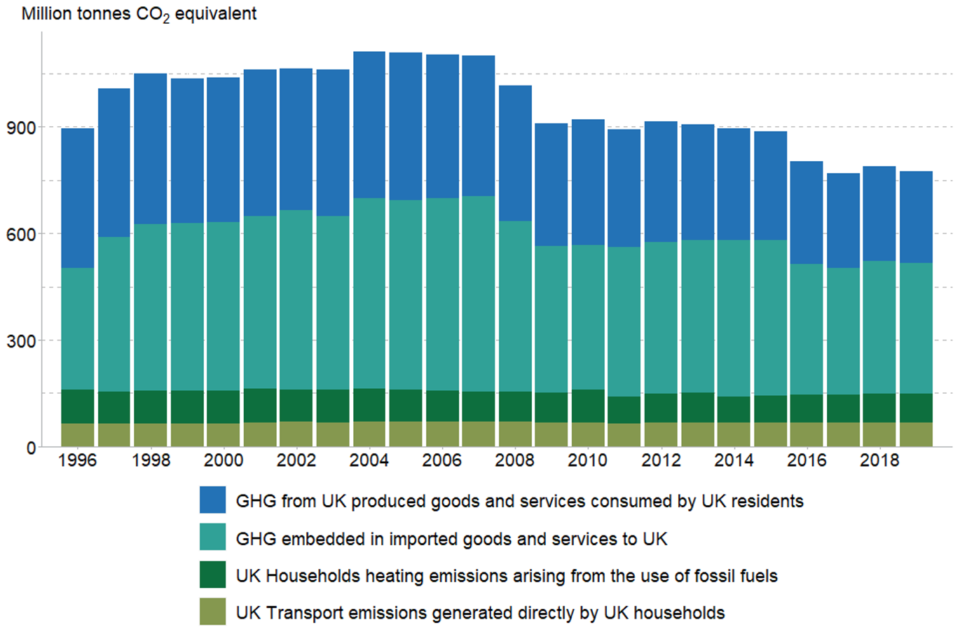Earlier in 2022 I was asked to produce some material for OpenLearn on carbon footprints as part of the OU’s Carbon Literacy training and the Digital Transformation project funded by the Higher Education Funding Council for Wales.
The OpenLearn article is at:
https://www.open.edu/openlearn/science-maths-technology/calculating-your-carbon-footprint
After discussing what is meant by a carbon footprint and ‘net zero’, and the contribution of personal actions in trying to reach this target by 2050, the article links to an OU carbon calculator. Peter Harper and I, working with OU interactive media developers, had previously created this calculator for the U116 Environment module.
The OU calculator aims to balance ease of use, accuracy and comprehensiveness. It attempts to be comprehensive by including the effects of income, goods and services consumption (including imports) and government and industrial infrastructure emissions as well as the usual personal energy, food and transport footprints. It differs from most other calculators by allowing you to set a percentage target for reducing your footprint and then change the answers to its questions to try to reach the target. If you can’t reach the target by individual changes, the calculator also allows you to agree to taxation for the government to invest in emission reductions or to invest in voluntary carbon offsets. When this calculator was developed the average carbon footprint of a UK inhabitant was 14.6 tonnes carbon dioxide equivalent per year, including imports. It has now fallen to about 10 to 11 tonnes per year, partly as a result of the electricity grid including more renewable energy. When it is updated, the new version will be included in the article.
Figure 1: Greenhouse gas emissions associated with UK consumption 1996 to 2019

(Credits: DEFRA (2022) Carbon footprint for the UK and England to 2019, Department of Environment Food and Rural Affairs, 28 June.)
There are many other carbon calculators which use different methodologies for calculating personal footprints and so give differing results. One of the most popular is the WWF calculator https://footprint.wwf.org.uk/#/ which as well as calculating your footprint provides ideas for reducing it. Another is the Carbonfootprint.com calculator https://www.carbonfootprint.com/calculator.aspx which can calculate footprints for people living in countries other than the UK and links to options for offsetting the footprint calculated. The OU has partnered with Giki Zero https://giki.earth/ which allows you to calculate your personal carbon footprint, provides many practical ‘steps’ for reducing it, and then shows the effect of taking the steps. The Giki calculator also shows the average footprint of OU staff using the calculator.
It has become clear, however, that while personal actions to reduce carbon emissions can contribute, major changes to energy, food, transport and built environment systems are needed if there is to be any chance of reaching net zero and limiting mean global temperature rise to 1.5 degrees Celsius.
Another calculator (linked in the References, sources and links section of OpenLearn article) which allows you explore different levels of major infrastructure change to move the UK’s territorial carbon footprint towards net zero by 2050, is the Mackay carbon calculator.
Making the system level changes suggested in the Mackay calculator will require actions by individuals as well as governments. For example, government policies and industry actions to increase the uptake of heat pumps and consumers willing to adopt them are all required.
Robin Roy

Leave a Reply